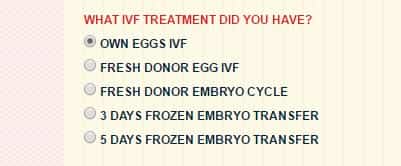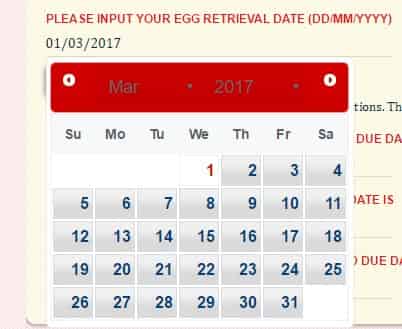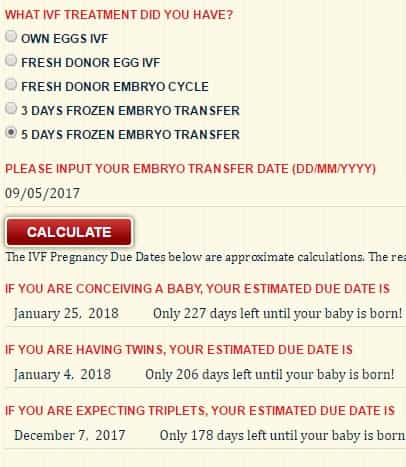Last Updated on December 2, 2020
“How long after IVF do you conceive?” “What is your baby’s date of conception?” Use our pregnancy IVF due date calculator and you’ll know! – whether you’re expecting one baby, twins, or triplets. Our due date calculator covers all IVF treatments, including 3 and 5 days FET.
A successful IVF cycle results in pregnancy, and with it comes many questions and anticipation. When will the baby arrive? What is my due date? Newly pregnant women have many resources to answer those questions. An IVF due date calculator takes the guesswork out of it. The IVF pregnancy calculator is simple, free, and usually easy to use.
Contents
What date do you need to calculate the due date?
Once you become pregnant after an IVF cycle, it’s relatively simple to calculate your due date. An IVF pregnancy due date calculator makes it easier, but it can be done with or without one. All you really need to know or be able to provide is the start date.
Start date of non-IVF pregnancy
Due dates are always based on a specific start date plus a number of weeks (usually, 38 weeks). Typically, the start date is the first date of the menstrual cycle, adjusted two weeks out to get the estimated ovulation date.
Calculating the due date for a non-IVF pregnancy is more complicated than with an IVF pregnancy. The reason is that most women who get pregnant without IVF are not tracking their ovulation the way you would in an IVF cycle. Because of this, doctors make estimates based on information about the last period. Sometimes, especially with irregular periods, only an ultrasound can accurately predict the due date.
Start date of IVF pregnancy
However, with an IVF pregnancy, the start dates are known because they are planned and scheduled! Instead of using an estimated ovulation date, you can use a couple of dates to give you a good estimate of the IVF due date.
If you conceived following IVF (with ICSI or without ICSI) in a stimulated cycle, you can use the day that the eggs were harvested as the start date. Or, you can use the date of the embryo transfer, or the date of the blastocyst transfer after replacing 3 days FET or 5 days FET. This online IVF due date calculator uses one of those two transfer dates as the basis.
With IVF pregnancy, you can also use other dates, including insemination date, blastocyst transfer date, ovulation date, or the first date of your last menstrual cycle. You have a lot of options to use for dates with an IVF pregnancy. Natural, non-IVF pregnancies are ultimately a little more difficult to calculate.
How the IVF pregnancy due date calculator work?
Either of the below methods for calculating IVF due date will work.
IVF Pregnancy Due Date with one baby
- IVF with Own Eggs (including ICSI or no): Use the egg retrieval date and then add 266 days (or 38 weeks).
- IVF with Fresh Donor Eggs Cycle(including ICSI or no): Use the egg retrieval date and then add 266 days (or 38 weeks).
- Fresh Donor Embryos Cycle: Use the egg retrieval date and then add 266 days (or 38 weeks).
- 3 Day FET due date: Use the transfer date and then add 266 days (or 38 weeks). Then, you need to subtract either 3 days (for embryos). Sometimes your embryos exact age is more than 3 days – subtract their exact age.
- 5 Day FET due date: Use the transfer date and then add 266 days (or 38 weeks). Then, you need to subtract 5 days (for blastocysts). Sometimes your blastocyst’s exact age is more than 5 days – subtract their exact age.
IVF Pregnancy Due Date with twins
The above one baby due date subtracts 21 days.
IVF Pregnancy Due Date with triplets
The above one baby due date subtracts 49 days.
You can follow and calculate your IVF due date by yourself manually, instead of using an IVF due date calculator.
How to use IVF due date calculator?
You can choose any IVF due date calculator that you want, and many are available online to use. Your fertility specialist may also use one or refer you to one. An IVF due date calculator typically only requires one input. To use most calculators, determine the start date, based on the information above or what the calculator says to do.
While using the pregnancy calculator is simple, you have to pay attention to which date to use for frozen embryo or blastocyst transfers, IVF, ICSI, or other methods of conception.
The advantage of the free online IVF due date calculator is that you can also easily correct mistakes if you enter the wrong date, or choose the wrong start date for your specific situation.
Step 1: Choose the IVF treatment
For this IVF due date calculator, which is a very simple one, you need to choose from one of five options:

- Own eggs IVF (This option includes ICSI or no)
- Fresh donor egg IVF (This option includes ICSI or no)
- Fresh donor embryo cycle
- 3 Day frozen embryo transfer(This option calculate 3 days PET due date)
- 5 Day frozen embryo transfer(This option calculate 5 days PET due date)
All you need to do is determine which date to use. This specific calculator determines everything else for you. It takes into account the age of embryos and blastocysts (typically, 3 and 5 days, respectively).
Step 2: Choose the start date in the IVF due date calculator
Each online IVF due date calculator is different. In this calculator, a valid date format is required. You can choose the egg retrieval date or embryo transfer date from the dropdown calendar or enter the start date by mm/dd/yyyy.

For example, a woman starts her IVF pregnancy journey with 5 days FET. His embryo transfer date is March 1, 2017, and input 01/03/2017.
Step 3: Press Calculate to see the results
The pregnancy calculator tells you the expected date of delivery (due date) with one baby, as well as twins or triplets.
Example Results from an IVF Due Date Calculator
To give you a better picture of how an IVF due date calculator usually works, here are two different sample scenarios. In each of these scenarios, the women conceived in different ways, but the timing of each conception is very close. Notice how the due date is different based on similar information. But every patient is different, so the due date of IVF given are approximate. The date on this IVF due date calculator is not intended to be a substitute for professional medical diagnosis or advice.
Scenario A: IVF Using own fresh eggs with ICSI
In Scenario A, a woman is using her own fresh eggs with ICSI, which were retrieved on May 8, 2016. Even without knowing which day the embryos or blastocysts will be transferred back into her uterus, she can use the calculator and input the date of egg retrieval to determine IVF due date.

Egg retrieval date:
May 8, 2017
IVF due date of own fresh eggs with ICSI:
January 29, 2018 if having one baby
January 8, 2018 if having twins
December 11, 2017 if having triplets
Scenario B: IVF using 5 Days FET
In Scenario B, a woman using previously frozen blastocysts has a transfer date of May 9, 2017. She can choose 5 Days frozen embryo transfer option and input the embryo transfer date to estimate the PET due date.

Date of blastocyst transfer:
May 9, 2017
IVF due date with 5 days FET:
January 25, 2018 if having one baby
January 4, 2018 if having twins
December 7, 2017 if having triplets
The woman in Scenario B, with the most recent transfer date, actually has the earliest due date, because blastocysts are aged embryos that have already begun dividing and developing, prior to transfer.
Frequently Asked Questions – IVF Due Date Calculator
What makes an IVF due date calculator different from other pregnancy due date calculators?
- The main difference is that an IVF due date calculator provides several options for a start date. A non-IVF due date calculator, on the other hand, usually has just one start date, which is the first day of the last period.
What information do you need to use an IVF due date calculator?
- You only need to know the start date, and that date can be one of the following: egg retrieval date, embryo transfer date, or blastocyst transfer date. Different calculators may provide additional or varied options.
Can you use estimated dates in an IVF due date calculator?
- If you’re planning IVF cycles, using an IVF due date calculator can be useful. You can use estimated dates or play around with any number of scenarios to get different results. Just keep in mind that a due date is not exact and many babies are not born on their expected due dates, regardless of how they were conceived.
Is the IVF Due Date Exact?
- IVF Pregnancy Due Date Calculator is exact but the due date is No. Just because the start date is known and more reliable with IVF pregnancies, it doesn’t mean the due date is going to be exact. For one thing, most pregnancies are 40 weeks (280 days) long, but not all of them are. So the due date is always an estimate, regardless of an IVF pregnancy or non-IVF pregnancy. Ultrasounds throughout the pregnancy will tell you and your doctor how the baby is growing, and the due date can be adjusted based on that.